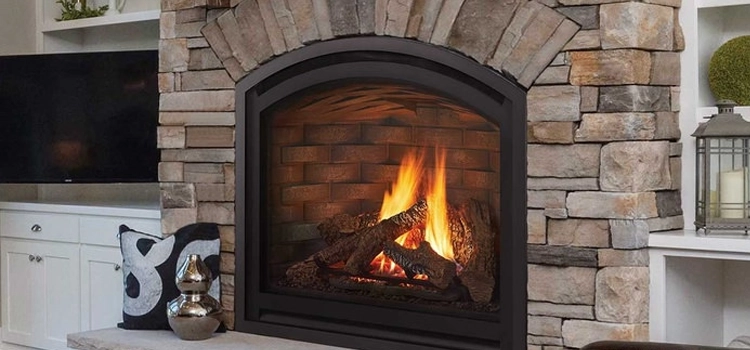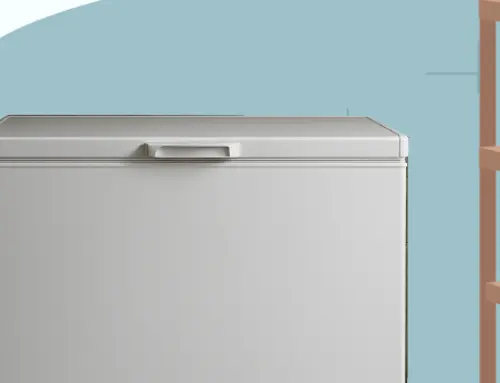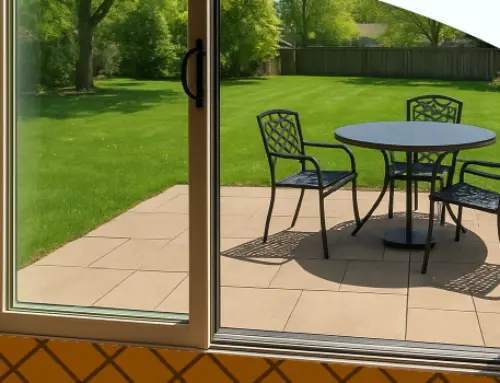Electric vs Gas Fireplaces: The Ultimate Comparison Guide
by Jenna Mendez
10.1 min read

Fireplaces are a popular choice for adding warmth and ambiance to your home. Electric and gas fireplaces are convenient and efficient alternatives to traditional wood-burning hearths. But which fire-generating model is right for you and your preferences?
In this read, we’re exploring the major differences between electric and gas fireplaces. We’re breaking down how they work, their installation, aesthetics, energy efficiency, costs, and more to help you choose the right model for your home!
What are the major differences between gas and electric fireplaces?
When comparing these two warm and cozy heat generators, there are a few important things to keep in mind. Electric fireplaces are convenient and efficient alternatives to traditional wood-burning hearths. They are easy to install and maintain, and they do not require a chimney. Electric fireplaces come in different styles and designs, so you can pick one that matches your home’s look.
On the other hand, gas fireplaces provide a more realistic flame and heat output compared to electric fireplaces. They use natural gas or propane and need a chimney or vent to remove the gases produced during combustion. Gas fireplaces cost more to install and maintain but work even through power outages if you’re in a jam for heat.
How does a gas fireplace work?
A gas fireplace works by using the power of burning natural gas or propane to make your space cozy and welcoming. At the heart of heating this gadget is a pilot light. A polite light is a small flame that always burns and sparks the main burner when you need heat. The constant ignition source provided by the pilot light ensures easy activation of the fireplace whenever needed.
However, problems with fireplace pilot lights can prompt the frustrating question: Why does my gas fireplace keep going out? A dirty or faulty pilot light or low gas flow are common issues. Cleaning your pilot light and regularly checking your gas pressure can help you avoid future problems with your fireplace.
How to light a gas fireplace
Lighting a gas fireplace is a straightforward process! If you have a gas fireplace with a piolet light and control panel, here’s a step-by-step guide on how to get your fireplace started:
- Make sure your fireplace’s chimney is open.
- If you have a front cover on your fireplace, be sure to remove it and set it to the side.
- If your control panel is not already in the “off” position be sure to turn it off. Wait 5 minutes for excess gas to escape.
- Turn your knob from the “off” position to the “pilot” position and push the pilot knob to begin the flow of gas.
- After the pilot lights, hold the pilot button down for 15 to 30 seconds to warm the thermocouple.
- Release the knob if the flame stays lit and turn your knob to the “on” position. Be sure to reattach your fireplace cover once your model is lit
If your model differs from this example, explore Home Depot’s guide for lighting various gas fireplace models. Be sure to consult the user manual for specific guidance, and seek professional assistance if you experience difficulties.
How does an electric fireplace work?
Electric fireplaces work by harnessing electrical energy to generate both realistic flames and heat. This model provides a convenient and aesthetically pleasing heating solution for homes. Contrary to what some might believe, electric fireplaces do give off heat. Most fireplaces have a heating element in the front that can warm up the surrounding air.
Electric fireplaces activate when you select a heating setting that triggers warm air to blow into the room. LED lights typically produce the flames you see, crafting a visually appealing and tailored display.
Types of gas and electric fireplaces
Various types of gas and electric fireplaces cater to different preferences and needs. Here is a breakdown of some of the most common models you might discover in your search for a new heating device:
Ventless gas fireplaces: offer flexibility in placement and installation since they don’t need a chimney.
Propane fireplaces: utilize propane as a fuel source, providing an alternative for homes without natural gas connections.
Outdoor gas fireplaces: extend the warmth and ambiance to outdoor spaces, allowing for cozy gatherings under the open sky.
Gas log fireplaces: simulate the look of a traditional wood-burning fireplace but operate with the convenience of gas.
Wall-mounted electric fireplaces: are easy to install and provide both warmth and aesthetics. Everything is accomplished without installing venting or a gas line.
Electric fireplace TV stands: combine the functionality of a media console with the warmth and ambiance of a fireplace.
Built-in electric fireplaces: can integrate into the structure of a room, offering a clean and modern look.
Electric fireplace media consoles: combine storage and heating capabilities in one piece of furniture.
Does a gas fireplace need a chimney?
A gas fireplace does not necessarily need a chimney. Unlike traditional wood-burning fireplaces, many gas fireplaces have vents that eliminate the need for a chimney. Ventless gas fireplaces can operate without a chimney and demonstrate efficient performance.
If you’re wondering about built-in fireplaces, these hearths do not require chimneys either. But gas fireplaces do need a way to vent the gas fumes they produce. The easiest way to expel these gases is to use a natural ventilation system or opt for a ventless fireplace model.
Which fireplace is easier to install?
Installing a gas fireplace generally requires professional expertise because of gas lines and potential venting requirements. Professionals typically handle gas connections, ensuring safety and compliance with local regulations. The installation process may involve creating a venting system or connecting to an existing chimney. This can add to complications in the installation process.
Installing an electric fireplace is often simpler to install and more homeowner-friendly. They don’t require gas lines or venting, and many models can plug into a standard electrical outlet. This simplicity makes electric fireplaces a more accessible option for homeowners who prefer a DIY approach.
Which fireplace is easier to maintain?
Maintaining a gas fireplace requires periodic professional check-ups because of the involvement of gas components. Professionals typically inspect the pilot light, gas connections, and ventilation to ensure safe and efficient operation. Cleaning the glass, checking for debris, and ensuring proper ventilation are vital tasks for gas fireplace maintenance.
In contrast, electric fireplaces are generally easier to maintain. You can easily clean the unit, including dusting the heating element and wiping down the glass. Homeowners can maintain other regular checks on the electrical components and functions without professional assistance.
Which fireplace is the safest?
Are gas fireplaces safe in your home? The short answer is, yes! Gas fireplaces are generally considered safe when installed and maintained correctly. Factors such as proper ventilation, and adherence to safety regulations influence the safety of a gas fireplace. Compared to traditional wood-burning fireplaces, gas fireplaces are much safer.
Widely considered safe, electric fireplaces pose fewer safety concerns compared to traditional wood-burning fireplaces. One of the primary reasons for their safety is the absence of real flames, reducing the risk of fire hazards. Electric fireplaces use LED lights to create realistic flame effects.
Which fireplace is more aesthetically appealing?
Homeowners often consider gas fireplaces aesthetically appealing because of their sleek designs, realistic flame patterns, and programmable features. Gas fireplaces offer a variety of materials to enhance their aesthetic appeal such as mantels, finishes, and brick textures. If you’re looking for the traditional “Christmas” appeal of a fireplace, this one’s for you.
With various designs, including wall-mounted, freestanding, or built-in options, electric fireplaces cater to different style preferences. Many love electric fireplaces because of their elegant and classy look.
Which fireplace is more energy efficient?
Homeowners often consider electric fireplaces more energy-efficient than their gas counterparts. This is because electric fireplaces have the ability to convert the energy they consume into heat. This efficiency results in consistent warmth without any heat loss through a chimney or venting.
Conversely, gas fireplaces are generally less energy-efficient because of their heat loss. While gas fireplaces provide effective heating, the venting system may result in some energy loss. However, advancements in technology have led to more energy-efficient gas fireplace models. They have features like direct venting systems that enhance their overall efficiency and reduce heat loss.
Which fireplace costs more?
Electric fireplaces are generally more cost-effective than gas fireplaces with upfront expenses and functional costs. Installing an electric fireplace is usually cheaper initially since it doesn’t involve gas line connections or venting systems. On average, an electric fireplace can cost $200 – $2,200.
Installing a gas fireplace might include creating a venting system, connecting to an existing chimney – or even building a new one. This can contribute to increased labor costs. All things considered, according to Fireplaces Direct, a new gas fireplace can cost between $2,500 to $10,000.
On average, electric fireplaces don’t use a lot of electricity. Depending on the make and model, these fireplaces typically use 1KW to 1.5KW per hour and cost roughly $0.10 to $0.20.
What is the lifespan of each fireplace?
Electric fireplaces have fewer mechanical components to maintain and on average, last 10-20 years. With regular care, an electric fireplace can last for years, offering dependable heating and a stylish solution for homeowners.
Gas fireplaces typically last 10-15 years. They often involve components like gas valves, pilot lights, and venting systems which can lead to wear and tear over time. Regular maintenance and servicing are crucial for extending the lifespan of a gas fireplace.
Will adding one fireplace over the other increase my home’s value?
Adding either an electric or gas fireplace can potentially increase your home value, although the impact might vary. Gas fireplaces, often considered a desirable feature, can add a touch of luxury and sophistication to a home. Homeowners often see these fireplaces as an amenity, especially in colder climates.
Electric fireplaces may not have the same impact on home value as gas fireplaces. Homeowners see gas fireplaces as more traditional and desirable, contributing to a home’s overall appeal. Gas fireplaces provide real flames which can also add to appeal.
However, both types of fireplaces can enhance the overall ambiance of a space. No matter what you choose, according to Forbes, adding a fireplace to your home can increase your abode’s value by 13%.
In the end, choose an electric fireplace if…
- In the end, choosing an electric fireplace for your home can be dependent on various factors:
- Electric fireplaces are often ideal for rental properties where permanent upgrades might not be possible.
- If you are on a budget, electric fireplaces generally have lower upfront costs
- Electric fireplaces are typically easier to install since they don’t require gas lines, vents, or chimneys.
- Electric fireplaces offer flexibility in placement since they don’t need venting.
Choose a gas-fired hearth if…
Choosing an electric fireplace for your home can be dependent on various factors:
- If your home already has a natural gas or propane line. Choosing a gas fireplace can be more convenient as it eliminates the need for additional installations.
- If you desire a more authentic fireplace experience with real flames.
- Gas fireplaces typically provide more substantial heating capacity compared to electric models.
- Choose a gas fireplace for a reliable heat source that can function even during power outages.
Whether you opt for a traditional gas fireplace or the convenience of an electric one, both offer unique advantages. Consider your priorities when thinking about installation, maintenance, safety, aesthetics, and cost to make an informed decision. No matter your choice, a well-chosen fireplace can enhance the ambiance and comfort of your home for years to come.
Santanna Energy Services is a supplier of renewable energy solutions in the United States, providing services to Illinois, Indiana, Pennsylvania, Michigan, and Ohio. We provide a wide range of energy services and products to meet the needs of both residential and small business customers. Our mission is to provide innovative and cost-effective energy solutions that will help our customers achieve their energy goals. With over 35 years of experience, we are committed to creating life-long relationships by providing quality service to customers, communities, and employees.
Jenna Mendez is a Midwest native with lifelong roots in Illinois and time spent in Ohio during college, giving her a deep understanding of the Midwest region’s people, climate, and energy needs. She brings firsthand experience and local insight to topics that matter to Midwest homeowners, especially energy efficiency, sustainability, and home living. Jenna specializes in writing about eco-friendly living, all things Midwest, renewable energy, and practical ways to reduce energy costs. Jenna brings a trusted, and local hometown voice to every article she writes, helping readers live well, and sustainably, right where they are.









